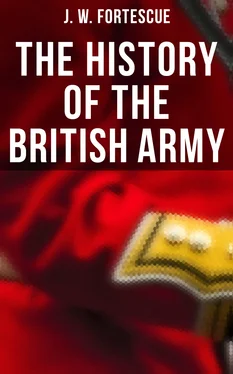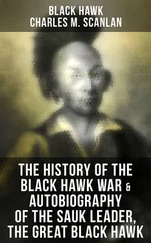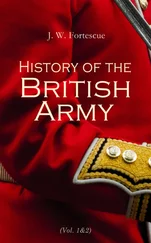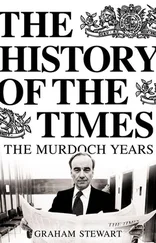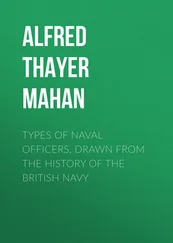J. Fortescue - The History of the British Army
Здесь есть возможность читать онлайн «J. Fortescue - The History of the British Army» — ознакомительный отрывок электронной книги совершенно бесплатно, а после прочтения отрывка купить полную версию. В некоторых случаях можно слушать аудио, скачать через торрент в формате fb2 и присутствует краткое содержание. Жанр: unrecognised, на английском языке. Описание произведения, (предисловие) а так же отзывы посетителей доступны на портале библиотеки ЛибКат.
- Название:The History of the British Army
- Автор:
- Жанр:
- Год:неизвестен
- ISBN:нет данных
- Рейтинг книги:4 / 5. Голосов: 1
-
Избранное:Добавить в избранное
- Отзывы:
-
Ваша оценка:
- 80
- 1
- 2
- 3
- 4
- 5
The History of the British Army: краткое содержание, описание и аннотация
Предлагаем к чтению аннотацию, описание, краткое содержание или предисловие (зависит от того, что написал сам автор книги «The History of the British Army»). Если вы не нашли необходимую информацию о книге — напишите в комментариях, мы постараемся отыскать её.
The History of the British Army — читать онлайн ознакомительный отрывок
Ниже представлен текст книги, разбитый по страницам. Система сохранения места последней прочитанной страницы, позволяет с удобством читать онлайн бесплатно книгу «The History of the British Army», без необходимости каждый раз заново искать на чём Вы остановились. Поставьте закладку, и сможете в любой момент перейти на страницу, на которой закончили чтение.
Интервал:
Закладка:
Men-at-arms, an expression derived from the French, were so called because they were covered with defensive armour from top to toe; but as the middle of the fourteenth century is a period of transition in the development of armour, it is difficult to describe their equipment with any certainty. Their offensive arms were the lance, sword, dagger, and shield. Trained from very early youth in the handling of weapons they were doubtless proficient enough with them; but they do not seem to have been great horsemen, and indeed it is recorded that they were sometimes tied to the saddle. Monstrelet, writing in the year 1416, tells us of the astonishment which certain Italians created among the French because they could actually turn their horses at the gallop. It is probable that the bits employed were too weak, and that the cumbrousness of the saddle and the weight carried by each man were sad obstacles to good horsemanship; but it is worth remembering in any case that, as this passage plainly shows, men-at-arms in the saddle were reduced to one of two alternatives, to move slowly and retain control of their horses, or to gallop for an indefinite period wherever the animals might choose to carry them.
The favourite horses, alike for speed, endurance, and courage, were the Spanish, which, as they could only reach England by the journey overland through France, were not always very easily obtained. Philip the Bold in 1282 refused to allow one batch of eighty such horses to be transhipped to England; but from a contract still extant, of the year 1333, it appears that Edward the Third still counted on Spain to provide him with remounts. These horses, however, were only bestridden for action, being committed on the march to the care of the shield-bearers or squires, who led them, as was natural, on their right-hand side, and thus procured for them the curious name of dextrarii .[16] The usual allowance of horses for a knight was three, besides a packhorse for his baggage, the smallest of which, named the palfrey, was that which he rode on ordinary occasions; in fact, to put the matter into modern language, a knight started on a campaign with a first charger, a second charger, and a pony. The first charger was always a stallion; the rest might be geldings or mares. From the year 1298 the practice of covering horses with defensive armour was introduced into England, an equipment which soon came to be regarded as so essential that one branch of the cavalry, and that the most important, was reckoned by the number of barded horses.
The personal retinue of the knights was made up of apprentices or aspirants to the rank which they held. The squire or shield-bearer took charge of the knight's armour on the march, and was responsible for maintaining it in proper order; and it is worth remarking that the English squire took a pride in burnishing the metal to the highest pitch of brilliancy, thus early establishing those traditions of smartness which are still so strong in our cavalry. It was also the squire's duty, among many others, to help his master to don his harness when the time for action came, beginning with his iron shoes or sollerets, and working upwards till the fabric was crowned by the iron headpiece, and the finishing touch added by the assumption of the shield. The reader will readily understand that a really efficient squire must have been invaluable, for if an engagement came in any way as a surprise there was an immediate rush for the baggage, and a scene of confusion that must have beggared description. Fortunately, the fact that both sides were generally alike unready, and the punctiliousness of chivalric courtesy, permitted as a rule ample time not only for the equipment of all ranks, but for the marshalling of the host.
In the matter of administrative organisation the men-at-arms were distributed into constabularies, being commanded by officers called constables. The strength of a constabulary seems to have varied from five-and-twenty to eighty; and this variety, together with the absence of any tactical unit of fixed strength, makes it impossible to state how many constabularies were included in the next tactical division. This was called the banner, and was commanded by a banneret, a rank originally conferred only upon such as could bring a certain number of followers into the field. Promotion to the degree of banneret was marked by cutting off the forked tail of the pennon which was carried by the ordinary knight, and leaving the remnant square. So at the present day, the pennons of lances are forked, the square being reserved for the standards of squadrons and regiments.
The independent employment of small bodies in action was almost unknown, the rule being to pack an indefinite number of men-at-arms, hundreds or even thousands, into a close and solid mass, its depth almost if not quite as great as its frontage. The haye , or thin line, is of much later date. Ordinarily some modification of the wedge was the formation preferred; that is to say, that the frontage of the front rank was somewhat less than that of the rear; the mass of that particular shape being judged to be less liable to disorder and better adapted for breaking into a hostile phalanx. The relative strength of the front and rear ranks depended entirely on the numbers that were packed in between them, and it may readily be supposed that the evolutions which so unwieldly a body could execute were very few. Probably, until the moment of action came, sufficient space was maintained to permit every horse to turn on his own ground, after the Roman fashion, to right, left, or about; but for the attack ranks and files were closed up as tightly as possible, and all other considerations were sacrificed to the maintenance of a compact array. It was said of the French knights who marched with Richard the Lion-Heart that an apple thrown into the midst of them would not have fallen to the ground. We must therefore rid ourselves of the popular notion of the knight as a headlong galloping cavalier. The attack of men-at-arms could not be very rapid unless it were made in disorder; and though it comes strictly under the head of shock-action, the shock was rather that of a ponderous column moving at a moderate pace than of a light line charging at high speed. By bearing these facts in mind it will be easier to understand the failure of mounted men-at-arms to break a passive square of infantry.
Next after the men-at-arms came a species of cavalry called by the name of pauncenars,[17] which was less fully equipped with defensive armour, but wore the habergeon[18] and was armed with the lance.
Lastly came the light cavalry of the fyrd, originally established to patrol the English coast. These were called hobelars, from the hobbies or ponies which they rode, and were equipped with an iron helmet, a heavily padded doublet ( aketon ), iron gloves, and a sword.
Turning next to the infantry, there were Welsh spearmen, carrying the weapon which gave them their name, but without defensive armour. Indeed it should seem that they were not overburdened with clothes of any kind, for they were every one provided at the King's expense with a tunic and a mantle, which were by express direction made of the same material and colour for all. These Welsh spearmen therefore were the first troops in the English service who were dressed in uniform, and they received it first in the year 1337.[19] The colour of their clothing unfortunately remains unknown to us.
Next we come to the peculiar strength of England, the archers. Though a certain number of them seem generally to have been mounted, yet, like the dragoons of a later day, these rode for the sake of swifter mobility only, and may rightly be reckoned as infantry. As has been already stated, the archers wore no defensive armour except an iron cap, relying on their bows alone. These bows were six feet four inches long; the arrows, of varying length but generally described as cloth-yard shafts, were fitted with barb and point of iron and fledged with the feathers of goose or peacock. But the weapon itself would have gone for little without the special training in its use wherein the English excelled. "My father," says Bishop Latimer (and we may reasonably assume that in such matters there had been little change in a hundred and fifty years), "My father was diligent in teaching me to shoot with the bow; he taught me to draw, to lay my body to the bow, not to draw with strength of arm as other nations do, but with the strength of the body. I had my bows bought[20] me according to my age and strength; as I increased in these my bows were made bigger and bigger." The principle was in fact analogous to that which is taught to young oarsmen at the present day. The results of this training were astonishing. The range of the long-bow in the hands of the old archers is said to have been fully two hundred and forty yards, and the force of the arrow to have been such as to pierce at a fair distance an inch of stout timber. Moreover, the shooting was both rapid and accurate. Indeed the long-bow was in the fourteenth century a more formidable weapon than the cross-bow, which had been condemned by Pope Innocent the Second as too deadly for Christian warfare so far back as 1139. It was at no disadvantage in the matter of range, while it could be discharged far more quickly; and further, since it was held not horizontally but perpendicularly to the ground, the archers could stand closer together, and their volleys could be better concentrated. Thus the long-bow, though the cross-bow was not unknown to the English, was not only the national but the better weapon. In action the archers were ranked as deep as was consistent with the delivery of effective volleys, the rear ranks being able to do good execution by aiming over the heads of the men before them. It may be imagined from the muscular training undergone by the archers that they were physically a magnificent body of men.
Читать дальшеИнтервал:
Закладка:
Похожие книги на «The History of the British Army»
Представляем Вашему вниманию похожие книги на «The History of the British Army» списком для выбора. Мы отобрали схожую по названию и смыслу литературу в надежде предоставить читателям больше вариантов отыскать новые, интересные, ещё непрочитанные произведения.
Обсуждение, отзывы о книге «The History of the British Army» и просто собственные мнения читателей. Оставьте ваши комментарии, напишите, что Вы думаете о произведении, его смысле или главных героях. Укажите что конкретно понравилось, а что нет, и почему Вы так считаете.
